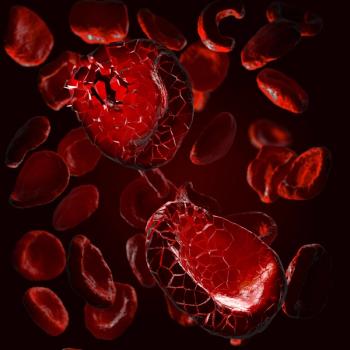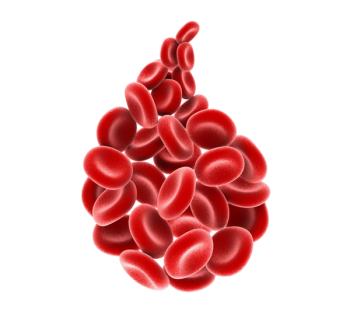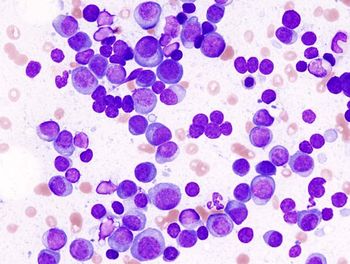
212Pb-Dotamtate Prolongs Responses in Advanced GEP-NETs
A manageable safety profile and survival benefit was observed across patient groups with somatostatin receptor–positive GEP-NETs.
Lead Pb 212 (212Pb)-dotamtate (AlphaMedix), an investigational somatostatin receptor (SSTR)–targeted α therapy, produced meaningful overall response rates (ORRs) and prolonged clinical benefit among patients with unresectable or metastatic SSTR-positive gastroenteropancreatic neuroendocrine tumors (GEP-NETs) regardless of previous peptide receptor radionuclide therapy (PRRT) receipt in the phase 2 ALPHAMEDIX02 study (NCT05153772), according to a news release from the developers, Sanofi Winthrop Industrie.1
Furthermore, investigators found benefits in key secondary survival end points, including progression-free survival (PFS) and overall survival (OS), across PRRT-naive and PRRT-exposed populations. Additionally, 212Pb-dotamtate demonstrated a manageable safety profile across both patient groups.
"The positive results from the ALPHAMEDIX02 study represent a pivotal movement for the Orano Med 212Pb-based platform and underscore the profound potential of 212Pb-based radiopharmaceuticals in addressing critical unmet needs for patients with GEP-NETs. We are [quite] encouraged by AlphaMedix's consistent and clinically meaningful activity across both PRRT-naive and PRRT-exposed [populations],” Volker Wagner, MD, PhD, chief medical officer at Orano Med, said in the news release.1 “These data reinforce our belief that delivering highly potent α-emitters directly to cancer cells could potentially offer a meaningful new treatment option for people living with GEP-NETs.”
The open-label phase 2 study evaluated 212Pb-dotamtate in patients with histologically confirmed unresectable or metastatic GEP-NETs, at least 1 site of measurable disease, and positive somatostatin analogue imaging. The study included 2 cohorts stratified by prior receipt of PRRT, with those exposed to PRRT having received up to 4 doses of lutetium Lu 177-dotatate (Lutathera), receiving their last dose at least 6 months prior to the start of study treatment. 212Pb-dotamtate was administered every 8 weeks for a maximum of 4 cycles at 67.6 μCi/kg, with a cycle not exceeding 6 mCi.
The primary end points of the study included ORR per RECIST v.1.1 criteria and safety. Secondary end points included PFS, OS, time to tumor progression, and health-related quality of life.2
The study is currently ongoing, and full results are expected to be presented at the
"The promising ALPHAMEDIX02 results represent a significant step forward, reinforcing the potential of targeted α therapy to deliver precise treatment for GEP-NETs,” said Christopher Corsico, MD, global head of development at Sanofi, in the release.1 “These data, demonstrating clinically meaningful activity and a manageable safety profile, underscore our unrelenting commitment to developing innovative therapies for patients with difficult-to-treat cancers. We look forward to advancing AlphaMedix and working with Orano Med and regulators to bring this important treatment to the GEP-NET community as soon as possible.”
Patients 18 years or older with progression after somatostatin analogue therapy, confirmed presence of somatostatin receptors on all lesions, an ECOG performance status of 0 or 2, sufficient bone marrow capacity and organ function, and a life expectancy of at least 12 weeks at the time of screening were eligible for study enrollment.
Those ineligible for study enrollment included those who received prior whole-body irradiation or PRRT using select agents or targeted α therapy; those who received prior regional hepatic radionuclide therapy within 4 months of enrollment; those with a known hypersensitivity to somatostatin analogues, amino acid infusion, or 212Pb-dotamtate; or those who received any somatostatin analogue within 1 day prior to cycle 1, day 1 of treatment. Additional exclusion criteria included a history of myelodysplastic syndrome, an indication for surgical lesion removal with curative intent, known brain metastases not treated and/or stable for at least 6 months, and other known coexisting malignancies except nonmelanoma skin cancer or carcinoma in situ of the uterine cervix.
References
- AlphaMedix (212Pb-dotamtate) achieved all primary efficacy endpoints in phase 2 study, demonstrating clinically meaningful benefits in patients with gastroenteropancreatic neuroendocrine tumors. News release. Sanofi Winthrop Industie. October 8, 2025. Accessed October 9, 2025. https://tinyurl.com/2cwmm2m6
- Targeted alpha-emitter therapy of PRRT naïve and previous PRRT neuroendocrine tumor patients (ALPHAMEDIX02). ClinicalTrials.gov. Updated June 4, 2025. Accessed October 9, 2025. https://tinyurl.com/ye2565b2
Newsletter
Stay up to date on recent advances in the multidisciplinary approach to cancer.

















































































